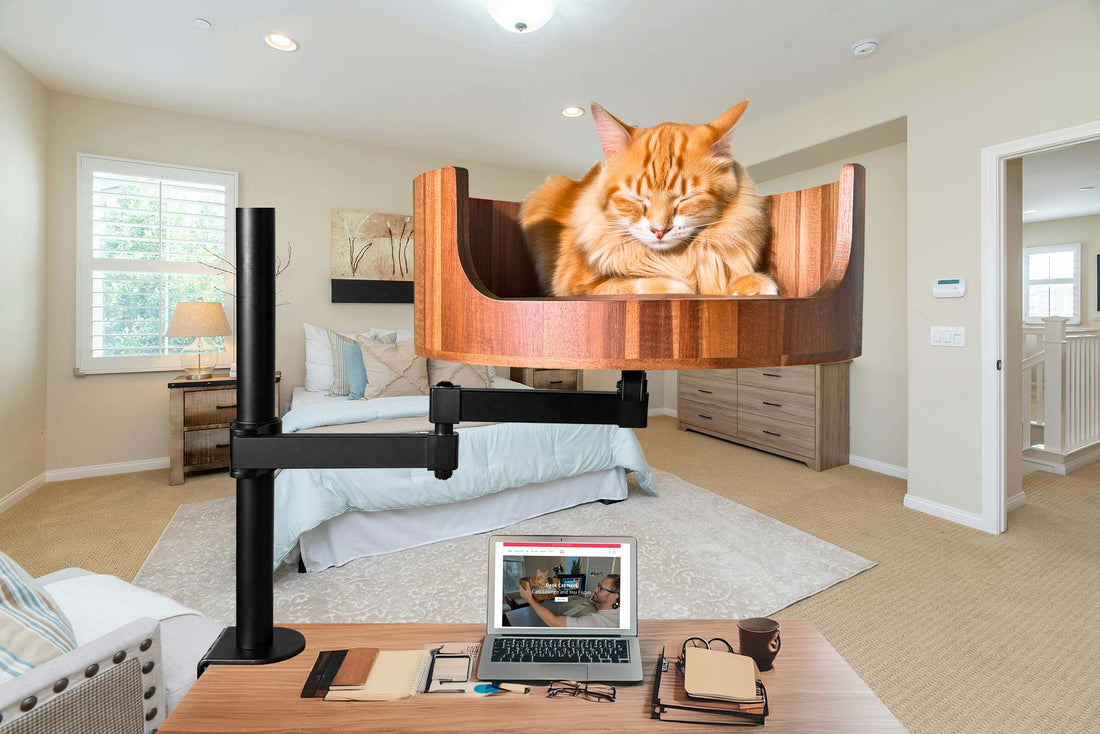
Why Does My Cat Have Eye Boogers? Understanding Causes
Share
Does your cat often wake up with crusty, gooey eye boogers? It may be a common occurrence, but understanding the causes behind why your feline friend experiences this issue is crucial for their overall eye health. In this article, we will delve into the various reasons why cats develop eye boogers, from benign factors like dust and allergies to more serious underlying issues that may require veterinary attention.
While eye boogers are generally harmless, they can occasionally be a symptom of a more serious health concern. By knowing what triggers these pesky eye crusts in your cat, you can better care for their well-being and address any potential underlying issues before they escalate. Join us as we explore the world of cat eye boogers and discover how to keep your furry companion's eyes clear, healthy, and free from discomfort.
1. Eye boogers in cats are often caused by natural tear production and dust particles accumulating in the eyes.
2. Allergies, infections, and health conditions can also contribute to the presence of eye discharge in cats.
3. Regular grooming and cleaning of your cat's face can help prevent excessive eye boogers.
4. If you notice changes in the consistency or color of your cat's eye discharge, it's essential to consult a veterinarian for proper diagnosis and treatment.
5. Understanding the underlying causes of eye boogers can help you better care for your feline friend's eye health.
What are Eye Boogers?
Eye boogers, also known as eye discharge or gunk, are a common occurrence in cats. They are the crusty buildup that forms around a cat's eyes, consisting of mucus, dust, debris, tears, and sometimes even bacteria. While some amount of eye discharge is normal for cats, excessive or chronic eye boogers may indicate an underlying health issue that requires attention.
Causes of Eye Boogers in Cats
There are several reasons why a cat may have eye boogers. One common cause is allergies, which can lead to increased tear production and subsequent eye discharge. Another possible cause is conjunctivitis, an inflammation of the membrane lining the eyelids. Other factors that can contribute to eye boogers in cats include infections, blocked tear ducts, foreign objects in the eye, or even anatomical abnormalities in the eyelids.
Symptoms and Signs to Watch for
Recognizing the symptoms of eye boogers in your cat is crucial for prompt diagnosis and treatment. Some common signs to watch for include excessive tearing, redness or swelling around the eyes, squinting or blinking, pawing at the eyes, or a change in the color or consistency of the eye discharge. If you notice any of these symptoms, it is best to consult a veterinarian for a proper evaluation.
Treatment Options for Eye Boogers
The treatment for eye boogers in cats will depend on the underlying cause. In some cases, simple home remedies such as gently wiping away the discharge with a clean cloth or using saline solution may be sufficient. However, if the eye boogers persist or are accompanied by other symptoms, a veterinarian may prescribe eye drops, ointments, or antibiotics to address the issue. In more severe cases, surgical intervention may be necessary to correct anatomical abnormalities or remove obstructions in the tear ducts.
Prevention and Maintenance
To help prevent eye boogers in your cat, it is essential to maintain good overall eye health. This includes keeping your cat's eyes clean, ensuring proper nutrition, and addressing any underlying health conditions promptly. Regular check-ups with a veterinarian can also help detect any potential issues early on and prevent them from escalating. By staying proactive and attentive to your cat's eye health, you can help minimize the occurrence of eye boogers and ensure your feline friend's eyes stay bright and clear.
Frequently Asked Questions
Why does my cat have eye boogers?
Cats can develop eye boogers due to a variety of reasons, including allergies, eye infections, or simply as a result of normal tear production. Dust, pollen, or other irritants can also contribute to the buildup of eye discharge in cats.
Is it normal for cats to have eye boogers?
It can be normal for cats to have some eye discharge, but excessive or persistent eye boogers may indicate an underlying issue that requires attention from a veterinarian. Monitor your cat's eye boogers to ensure they are not becoming excessive.
Can the Desk Cat Nest help with my cat's eye boogers?
The Desk Cat Nest can help provide a safe and comfortable space for your cat to rest, which can contribute to their overall health and well-being. While it may not directly address the issue of eye boogers, creating a stress-free environment for your cat can support their immune system and overall eye health.
Should I consult a veterinarian about my cat's eye boogers?
If you notice changes in your cat's eye discharge, such as color, consistency, or amount, it is always best to consult a veterinarian. They can help identify the underlying cause of the eye boogers and provide appropriate treatment or recommendations for your cat's eye health.
In conclusion, providing your cat with a Desk Cat Bed can help prevent and reduce eye boogers. By creating a comfortable and elevated space for your cat to rest, you can help improve their overall eye health and hygiene. The Desk Cat Bed's unique design offers a cozy and secure spot for your feline friend to curl up, ensuring they get proper rest and relaxation. With the added benefit of reducing eye irritation and discharge, the Desk Cat Bed is a valuable choice for cat owners looking to improve their pet's wellness.



















































